As an aspiring author or self-publisher, you’ve put in countless hours honing each sentence and polishing your tale to perfection. The inner design of your book, on the other hand, is often disregarded yet equally important. The internal presentation of your book may have a big influence on the reader’s experience and opinion of your work.
We will dig into the complexities of book interior design and formatting in this thorough tutorial, equipping you to build a visually beautiful and professional book that captivates your readers from the first page.
The interior design of any book is a tricky business. It’s all a play of the right fonts, styles, and numbers. It is hard to imagine that small details like these can affect your writing this way.
It definitely is hard to pick up the right stuff from the myriad of things available online these days but it’s not impossible.
This quick guide will help you find your way to being a professional in designing your book interior.
What is the interior layout of a book and interior formatting?
The interior layout and formatting of a book are essential aspects that can significantly impact the reader’s experience. Known as “typesetting,” this process involves making critical decisions regarding various design elements. Fonts, spacing, margins, chapter headings, and overall aesthetics contribute to the book’s visual appeal and readability.
A well-designed interior can elevate the content and convey a sense of professionalism, drawing readers deeper into the narrative. On the other hand, a poorly executed layout can undermine the brilliance of the writing and create distractions for readers.
Authors should approach interior layout and formatting with care and attention to detail. Each choice made during this process can influence how readers perceive and engage with the book.
A clean and visually appealing layout enhances the overall reading experience, making it easier for readers to follow the text and immerse themselves in the story. In contrast, a cluttered or inconsistent design can lead to confusion and disinterest. By understanding the significance of interior layout and formatting, authors can create a harmonious and impactful book that resonates with their audience.

A complete guide on how you can beautify your book interior
How do you make a book visually appealing?
Beyond the written content, visual elements play a crucial role in elevating a book’s overall appeal. Authors can experiment with various design choices to enhance the aesthetics and leave a lasting impression on readers.
One area to explore is chapter heading fonts. Selecting unique and visually striking fonts for chapter titles can add a touch of elegance and personality to the book. It allows authors to infuse their style and creativity into the visual narrative.
Additionally, incorporating small symbols or graphic images as trademark symbols can provide a distinctive visual identity for the book. Such symbols can serve as recurring motifs throughout the work, creating a cohesive visual theme.
For specific genres, including illustrations can be a game-changer. Visual representations of key scenes or characters can deepen the reader’s immersion and comprehension of the story. From captivating cover illustrations to intricate interior artwork, visuals can evoke emotions and enrich the reading experience.
Choosing the Right Book Size and Genre-Appropriate Format
Selecting the appropriate book size and format is crucial to conveying the intended message and catering to the target audience. The dimensions of the book can influence its portability, readability, and overall aesthetics. For paperbacks in genres like romance or non-fiction, a popular choice is the 5×8 size. This size strikes a balance between being compact enough for easy handling and providing sufficient space for comfortable reading.
On the other hand, fiction works often benefit from hardbound editions with eye-catching covers. The hardbound format adds a touch of elegance and sophistication, making the book an attractive addition to any reader’s collection. However, this format is more suitable for certain genres where readers may appreciate the durability and collectible nature of hardcovers.
Authors should consider their target audience and the genre of their book when deciding on the size and format. Understanding readers’ preferences and expectations can help authors make informed choices that enhance the overall reading experience and align with their creative vision.
Decoding the Font Dilemma
Font selection is a critical aspect of interior design, as different fonts can convey distinct emotions and impact readability. With the vast array of font choices available, authors may find themselves overwhelmed by the decision. However, it is often best to stick to tried-and-true fonts that have proven readability and timeless appeal.
Fonts like Times New Roman, Garamond, and Bookman are popular choices in the publishing world for their legibility and classic appearance. While it may be tempting to experiment with unique or decorative fonts, it’s essential to prioritise readability above all else. A font that is too elaborate or difficult to read may distract readers from the content and hinder their overall enjoyment of the book.
Furthermore, authors should consider the font size carefully. A font size that is too large may give the impression of an amateurish layout, while a font size that is too small can strain readers’ eyes. Striking the right balance with a font size of 11 or 12 can ensure a comfortable reading experience and allow readers to focus on the story without unnecessary distractions.
Mastering the Margins
In the art of book design, mastering the margins is a critical skill that directly impacts the overall reading experience. The margins refer to the white space surrounding the text on each page. Properly balanced margins play a significant role in ensuring that the text remains easily readable and visually appealing to the reader.
One essential aspect of managing margins is avoiding placing text too close to the edges. When text is too close to the binding edge, known as the gutter margin, it can be obscured, making it challenging for readers to fully enjoy the content. Similarly, text that extends too close to the outer edges might risk getting cut off during the printing process, leading to an unsightly appearance.
An ideal layout allocates the top margin for the author’s name and book title, allowing readers to quickly identify the work. The bottom margin, on the other hand, is dedicated to accommodating page numbers, providing a clear structure for navigating the book.
While uniformity in margins is essential for consistency, the inside margin is typically slightly wider than the other margins. This allowance accounts for the binding process, ensuring that no text is lost within the spine of the book. By thoughtfully managing margins, authors can create an elegant and professional interior layout that enhances the overall reading experience.
The Magic of Page Breaks
Page breaks are subtle yet powerful tools that can shape the flow of a book’s narrative. Strategically placed at key moments, page breaks offer readers a brief pause to absorb the preceding content before moving on to the next section. Just like punctuation marks in writing, well-placed page breaks can create a sense of rhythm and pacing, enriching the reading experience.
An effective use of page breaks is particularly crucial in fiction and non-fiction narratives where shifts in scenes, perspectives, or topics occur. By employing page breaks in these transitions, authors can signal to readers that a new chapter is about to unfold, providing a moment of anticipation and allowing the reader to mentally prepare for the change.
Page breaks also facilitate visual appeal, contributing to the aesthetics of the book. When properly spaced, they give the reader a sense of order and organisation, making the text more inviting and less overwhelming. Authors should consider the overall structure of their book and strategically place page breaks to enhance both the narrative flow and the book’s visual allure.

Get an idea on how much does a book formatting would cost you.
How much does book formatting cost?
Professional formatting can be a game-changer in presenting your book in the best possible light. It adds a touch of sophistication, enhances readability, and gives your work a polished and professional appearance.
However, it’s essential to acknowledge that this level of expertise often comes with a price tag. Hiring freelancers or professional formatting services can be a significant investment, especially for independent authors on a tight budget.
While the allure of professional formatting is undeniable, it’s not the only path to a well-formatted book. For those who are passionate about learning and are willing to put in the effort, there are resources available to help you master the basics of book formatting. Video tutorials, guides, and online courses can provide valuable insights and practical knowledge to help you undertake formatting yourself.
Self-publishing platforms have also become a valuable resource for authors seeking cost-effective solutions. Blue Rose ONE, for example, offers a comprehensive self-publishing platform with a DIY option that puts you in the driver’s seat. You can take control of every aspect of your book’s journey, from cover design to interior formatting, and publish it on your terms.
Learn how to format a book | Upload a formatted file on BlueRoseOne to publish.
Through Blue Rose ONE you can opt for formatting as an add-on to your package and forget worrying about your book.
To sum it up, the interior design and formatting of your book are important components of any book publishing journey.
Focus on the tiny details and you’ll have the perfect edition of your book in your hands.
Harnessing the Power of BlueRoseONE
Blue Rose One is more than just a self-publishing platform; it’s a creative haven for authors. Their user-friendly interface and robust features make the self-publishing process smooth and enjoyable, even for those with little to no design expertise.
For authors who prefer a hands-on approach, the DIY option allows you to self-publish your book with ease. You retain full control over the creative process, making decisions about cover design, interior layout, and more. This empowers you to bring your vision to life without compromising artistic integrity.
One of the standout features of Blue Rose One is its collection of interior design templates. These ready-to-use templates take the guesswork out of formatting, ensuring a professionally designed interior for your book. You can choose from various styles and themes that match your book’s genre and tone and customise them to suit your preferences.
As you embark on your book publishing journey, remember that the interior design and formatting of your book are not merely aesthetic details but essential components that contribute to the overall reading experience. By paying attention to the nuances of typesetting, font selection, margins, page breaks, and visual elements, you can create a book that reflects the true essence of your writing and captivates readers.
With the plethora of resources available, including Blue Rose ONE’s user-friendly platform, you can confidently craft a visually appealing and professional book that leaves an indelible mark on your readers’ hearts. Embrace the art of interior design, and your book will shine like a gem amidst the literary world.
You may also like: Fantasy Books complete publishing guide in India 2024

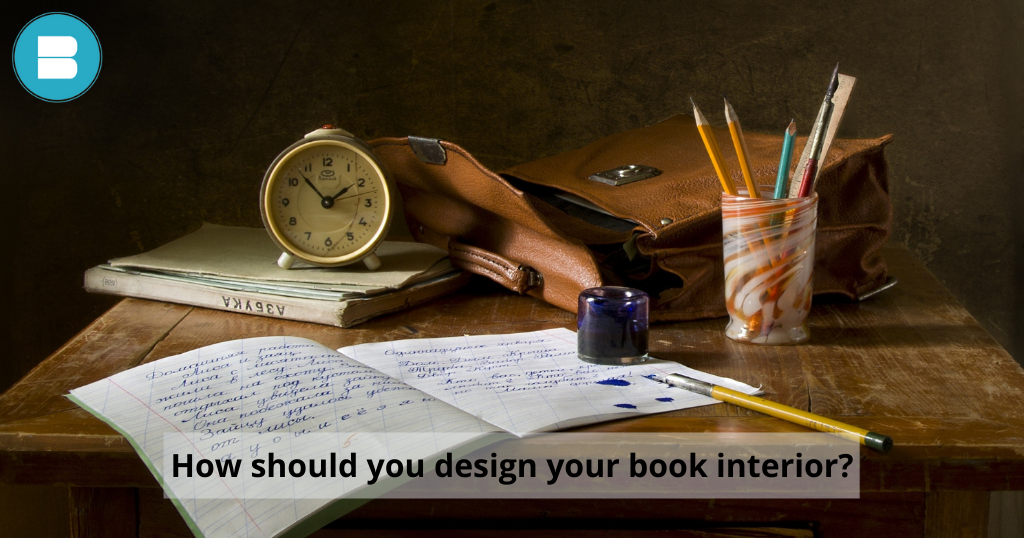


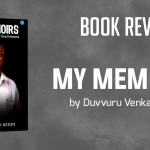

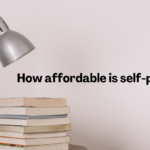
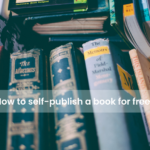



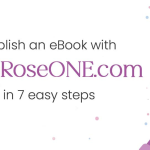

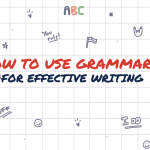

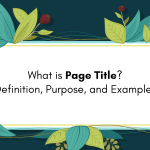
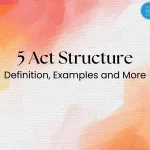
[…] Read: How should you design your book interior? […]
[…] Read: How should you design your book interior? […]
[…] the necessary book editing and/or ghost writing done for them, assisting in choosing the cover for their book, getting the […]
[…] soon as you sign the contract papers for self-publishing a book, your work goes in for editing, beautification, etc. With BlueRoseONE, you have the perk of paying your package money in installments and the […]